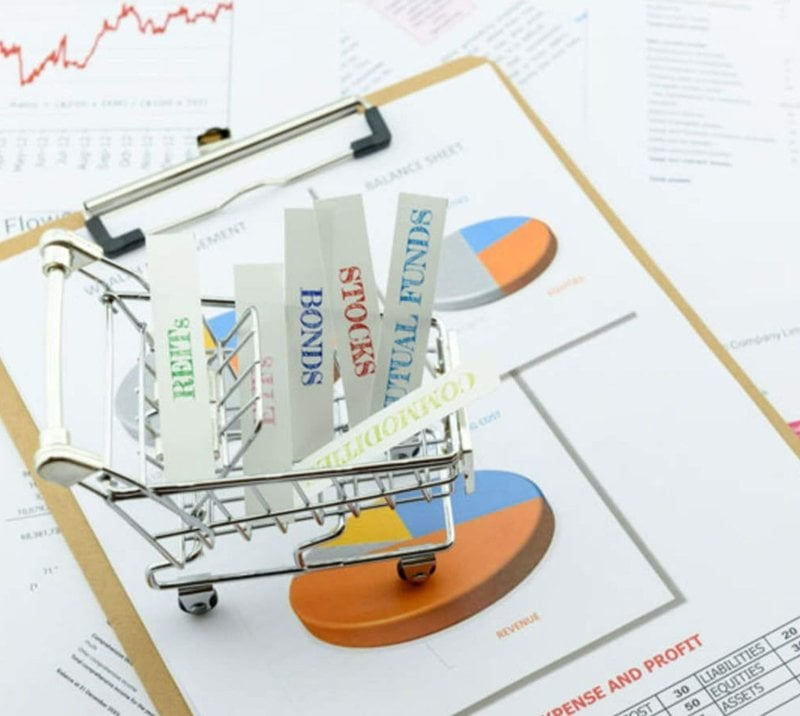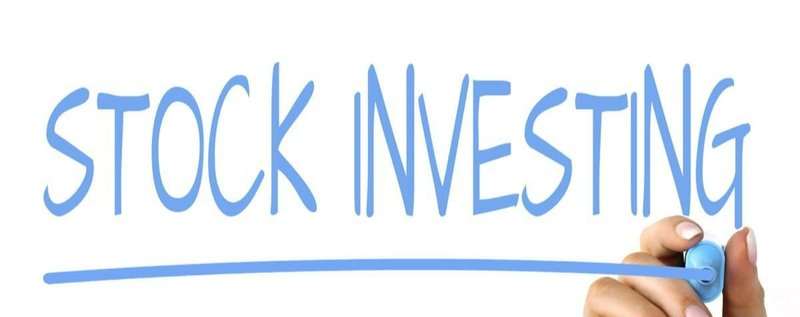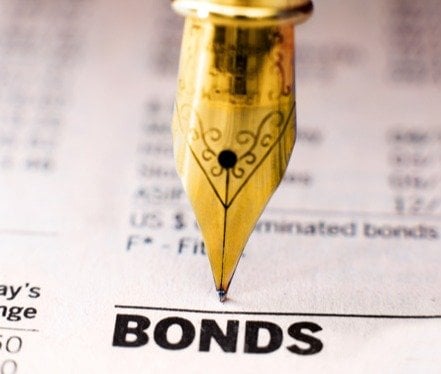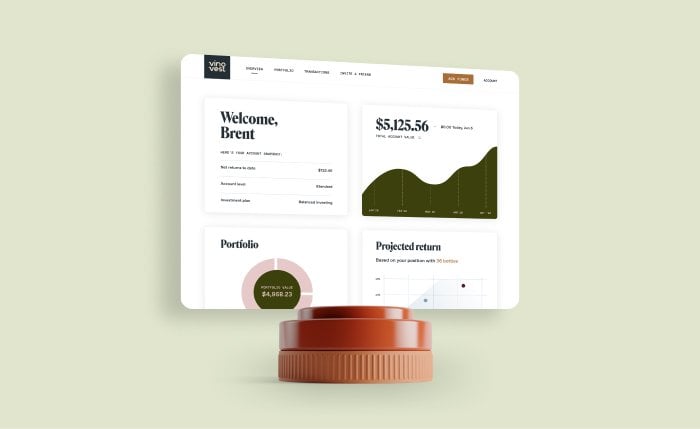How To Build A Rock-Solid Investment Portfolio
Like any journey, getting started is often the hardest step!
With seemingly endless investment options - stocks, bonds, real estate, cryptocurrencies, and many others, finding somewhere to start can be a challenge.
How do you decide which assets are best for your needs?
In this article, we’ll explore what an investment portfolio is, how your risk tolerance influences the assets in your portfolio, and the steps involved in building an investment portfolio. We’ll also show you how to strengthen your portfolio with an alternative investment like fine wine.
Further reading
- Discover 10 Inflation Proof Investments to help solidify your investment portfolio.
- Additionally, explore some Investment Portfolio Strategies to help grow your investments.

What Is An Investment Portfolio?
An investment portfolio is a collection of assets holding investments like stocks, bonds, mutual funds, exchange traded funds, cash, and cash equivalents. Investors mix these investments to suit their risk tolerance and financial goal.
Ultimately, the goal of an investment portfolio is to earn the investor a profit while preserving capital and assets.
Next, let’s see how to go about building an investment portfolio.

How To Build An Investment Portfolio: 6 Important Steps
Building investment portfolios can sound daunting, but it doesn’t have to be. Here’s a short guide on getting your investment portfolio started.
- Determine your risk tolerance and investment time horizon
- Decide how active you want to be
- Choose an account that matches your goals
- Pick your investments
- Decide on an allocation
- Rebalance your investments

1. Determine your risk tolerance and investment time horizon
There are many things to remember when constructing your investment portfolio, but one of the most important is risk tolerance.
This refers to your ability to accept potential losses in exchange for the possibility of earning higher investment returns.
Now, your time horizon is a significant contributor to risk tolerance.
The time horizon refers to the period where you expect your investments to have reached a particular goal, such as retirement. If your investment goal is still many years away, you can afford to take risks and benefit from the market’s general upward trajectory.
Understanding when you’d like your investments to mature is essential in building your portfolio.

2. Decide how active you want to be
If building an investment portfolio from the ground up sounds like work, you can go the automation route. Robo-advisors are a good option for this. You provide information on your financial goals and risk tolerance, and then it constructs a portfolio around your specific investment objectives.
A financial advisor or portfolio manager can help with portfolio diversification. They’ll likely also offer wealth management services for affluent clients. Note that if opting for managed portfolios, there are additional expenses.
For instance, Vinovestis a wine investment company that offers the best of both worlds - a personalized portfolio without charging outrageous fees. Complete a 1-minute questionnaire, and Vinovest will help build a personalized portfolio that matches your investment decision.

3. Choose an account that matches your goals
Before you can build your investment portfolio, you’ll need an investment account.
There are different types of investment accounts. Some are built directly into retirement accounts, while others work through a private brokerage firm.
Retirement accounts like a 401(k) or Roth IRA offer tax advantages. 401(k), 403(b), and traditional IRAs are tax-free, so you won’t pay taxes until you take distributions.
A Roth IRA and a Roth 401(k) incur taxes on your upfront contributions, but you then have tax-free growth and withdrawals.
However, if your investment goal is more short-term, a standard taxable brokerage account is the way to go. If you’re looking to expand your capital to invest in a few years, you might want to consider a high-yield savings account.
In any case, it’s important to understand your financial goal clearly before choosing an account.

4. Pick your investments
Now that you have an account, it’s time to fill it with some assets. Risk tolerance fits in here, as the assets must match your timeline.
Picking your assets is an important investment decision. Here are a few popular assets to invest in:
Fine wine

Fortunately, you don't need to be a sommelier to invest in wine.
A great place to start is by purchasing wines you enjoy that you expect to rise in value. Alternatively, you can track the market to try and find potential investment opportunities.
For the latter, the Liv-ex 100 is a good index to follow. It tracks the 100 most sought-after wines globally and provided an average monthly return of 22% in the year between May 2021 and May 2022. This is an impressive return, especially when the S&P 500 generated -5% during the same period.
Stocks

Investors buy shares of a company they believe will perform well in the future. The risk of investing in individual stocks is that the company doesn't perform as well as predicted, causing your investment to lose value.
To mitigate this risk, investors put their money into funds like an index fund, mutual fund, or stock fund. These tend to hold stocks from lots of companies.
If you opt for individual stocks, it's generally recommended not to allocate more than 10% of your portfolio to them.
Bonds

Stocks and bonds form the core of a well diversified portfolio. Companies and governments issue bonds to access new cash flow to finance projects. They then repay these loans with interest.
Bonds are considered a safer investment than an index fund, mutual fund, and stocks but offer lower investment returns. A bond is a fixed income investment because you know the interest rate you’ll receive before investing.
Mutual funds

A mutual fund is an investment fund that pools capital from multiple investors and invests it in a basket of securities, such as stocks or bonds. Like ETFs, there are different kinds of mutual funds, but one advantage to investing is their diversification.
Short term investments
These can include fixed income securities like money market funds and short-term certificates of deposit (CD). Money market funds are ideal for those looking to preserve capital but tend to offer lower returns than a bond fund or individual bond. However, money market funds aren’t insured by the Federal Deposit Insurance Corporation (FDIC) the way most CDs are.

5. Decide on an allocation
Now that you’ve decided which assets to include in your investment portfolios, you need to decide on allocations. Simply put, how much of each asset class do you want?
The way to split up your assets is heavily dependent upon your risk tolerance. One commonly suggested method for determining your stock allocation is subtracting your age from 100 or 110.
For example, if you’re 30, this method suggests stocks should comprise 70% to 80% of your portfolio. However, this is a rule of thumb. It’s wise to consider your risk tolerance before deciding on allocations.

6. Rebalance your investments
Over time, your stock allocations may shift and disrupt your portfolio’s proportions. In this case, some portfolio management may be necessary. You can rebalance your portfolio and restore it to its original asset allocation.
If using a financial advisor or portfolio manager, they’ll likely handle the portfolio management on your behalf. They may recommend rebalancing at set intervals, like every six months or when your asset allocation shifts beyond a certain percentage.
Fortunately, if you’re using a robo-advisor like Vinovest, you shouldn’t need to worry about this. Most robo-advisors automatically rebalance your portfolio as needed.

Why It's Important To Diversify Your Portfolio With Alt Investments Like Wine
Well-known investments like stocks, bonds, and mutual funds form the backbone of an investment strategy. However, you need alternative investments to reduce your overall investment risk and aid with portfolio diversification.
Alternative investments are an asset class that often have a minimal correlation to the stock market and include things like gold or real estate. Including alternatives helps create a diversified portfolio and mitigate potential losses.
But, like traditional assets, there are tons of alternative investment options.
So how do you pick one?
If you’re looking for a stable, inflation- and recession-resistant investment offering good returns, you may be interested in fine wine.
Here are a few reasons adding fine wine is a solid investment strategy:
- Solid returns: Fine wine is one of the best performers in 2022. The Liv-Ex 1000, the most comprehensive measure of the wine market, climbed 7.3% in the first quarter alone. 2021’s star performers Champagne and Burgundy once again performed admirably. Looking further back, fine wine has provided 5-year returns of 50.3%.
- Stable, low-risk investment: Fine wine is often a low-risk investment. Once you’ve invested, companies like Vinovest insure your wine and store it in bonded warehouses. Fine wine also has a minimal correlation with the stock market. This means that when stocks are volatile, fine wine isn’t. For example, during the global recession of 2007, the S&P 500 plummeted by more than 38%. The Liv-ex 1000 lost just 0.6%.
But then, how do you go about investing in fine wine?
That’s the easy part. Vinovest is a wine investment company offering new and experienced investors the opportunity to add a potentially lucrative asset to their investment portfolio. Vinovest takes care of all the hard work, including authentication, insurance, and storage. The platform will even ship your wines to your doorstep if you want to take ownership.

The cherry on top?
You can sell your wine whenever you want. However, fine wine usually peaks in value after 5-20 years. Our advisors will give guidance on the best liquidity options and time periods to sell and work with you to maximize your return on investment, no matter the market conditions.
Here’s a quick rundown of how Vinovest works:
- Step 1: Sign up with the platform. The process only takes several minutes.
- Step 2: Fill out a short questionnaire. This will help Vinovest’s wine experts determine your investment style.
- Step 3: Fund your account. The minimum is $1,000
- Step 4: Enhance your investment portfolio with world-class wines. Using the answers from your questionnaire, Vinovest’s AI will recommend some wines.
- Step 5: Watch your portfolio grow.
Strengthen Your Investment Portfolio With Fine Wine
Building a robust investment portfolio is one of the best decisions you can make to achieve your investment objectives. Traditional investment types like stocks and bonds are a great starting point. However, to reduce your investment risk, you need alternative investments.
While there are tons of alternatives to pick from, fine wine is a strong contender. Fine wine could take your investment portfolio to new heights with good returns, excellent diversification, and low investment minimums.
Sign up with the platform today and see the benefits yourself.



